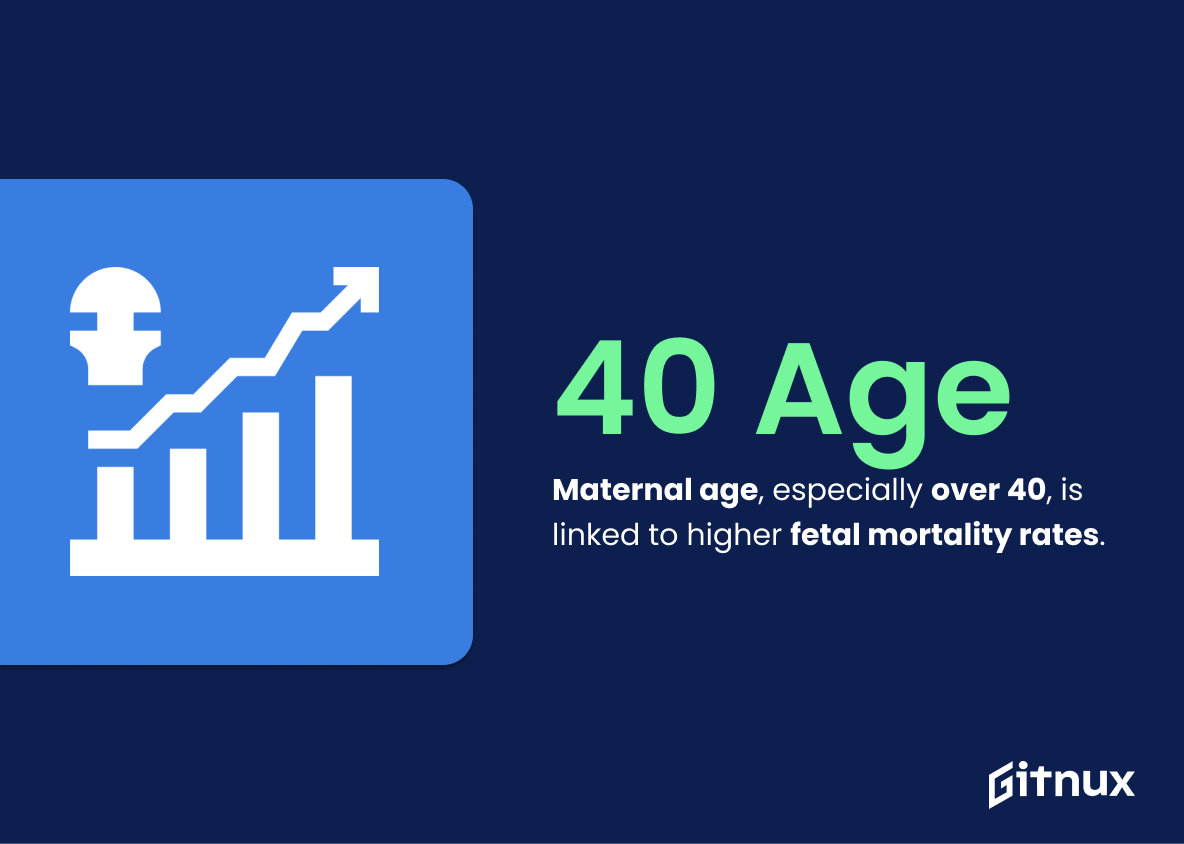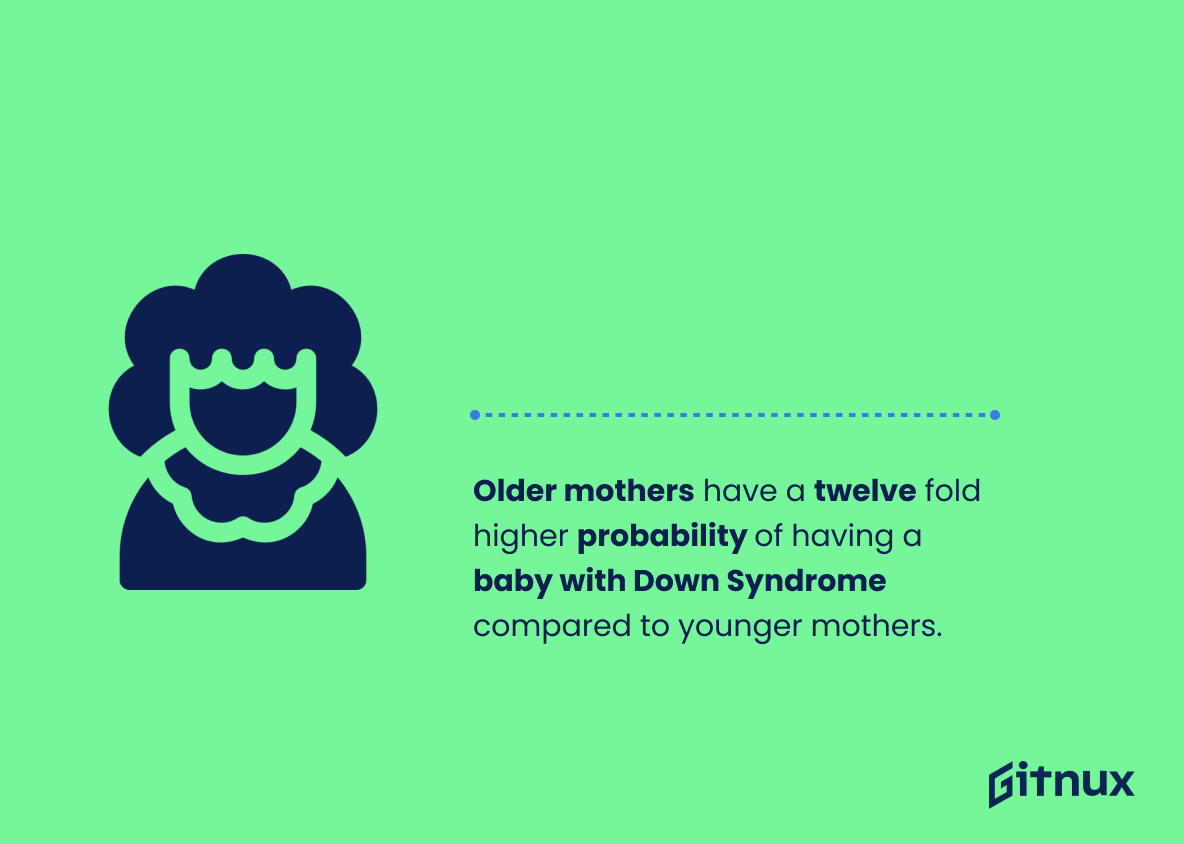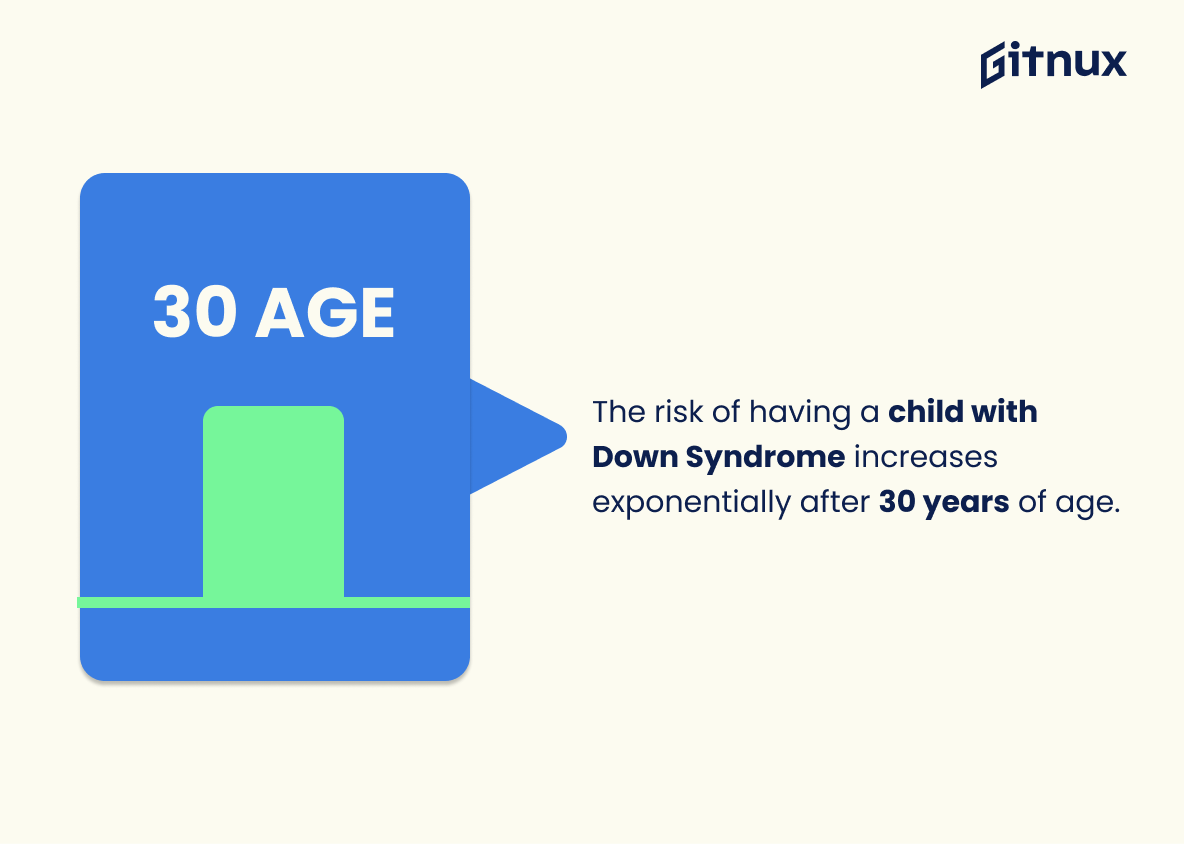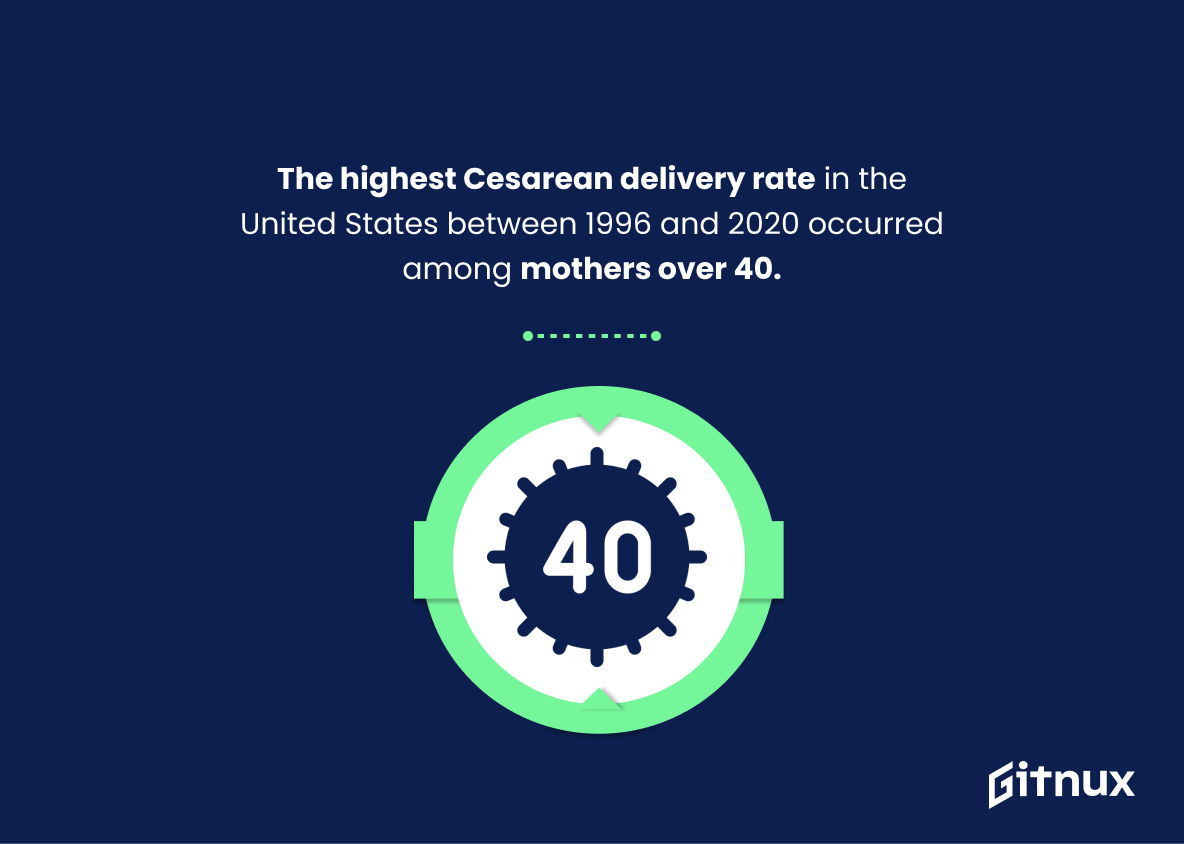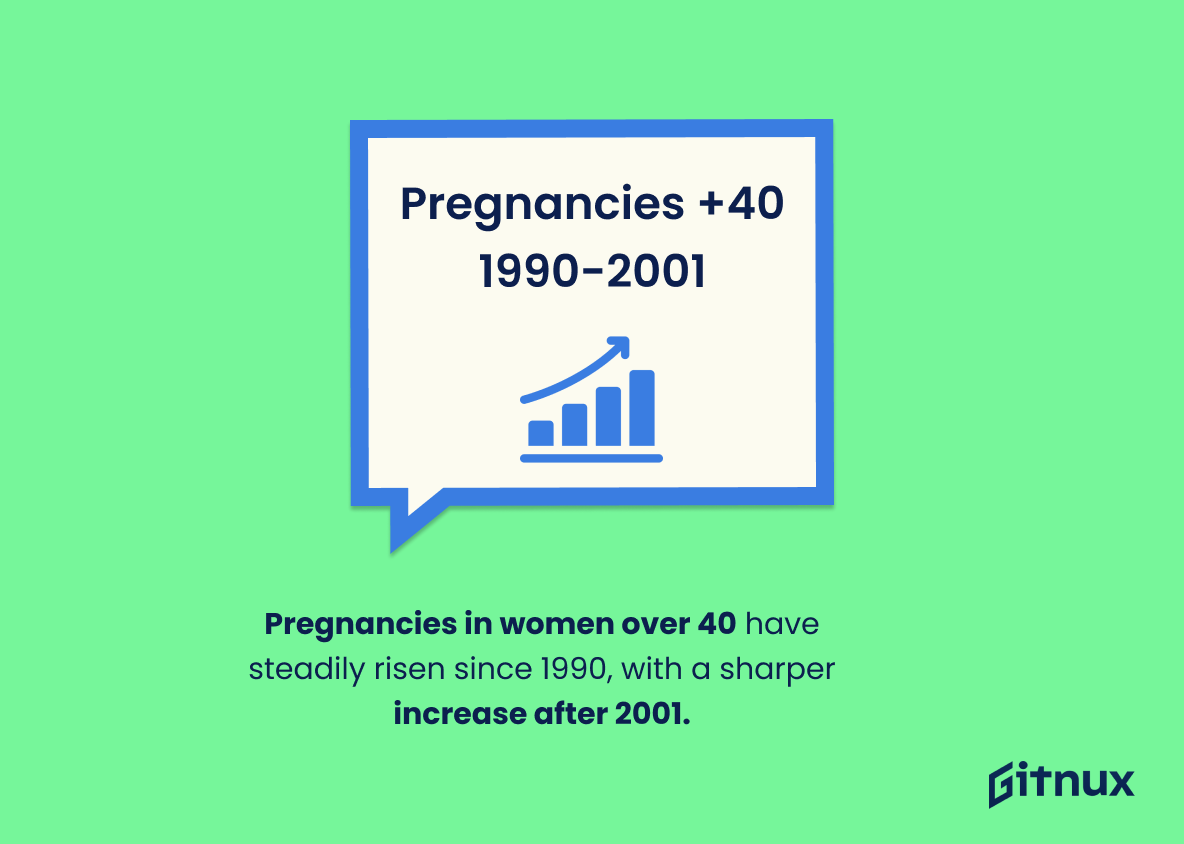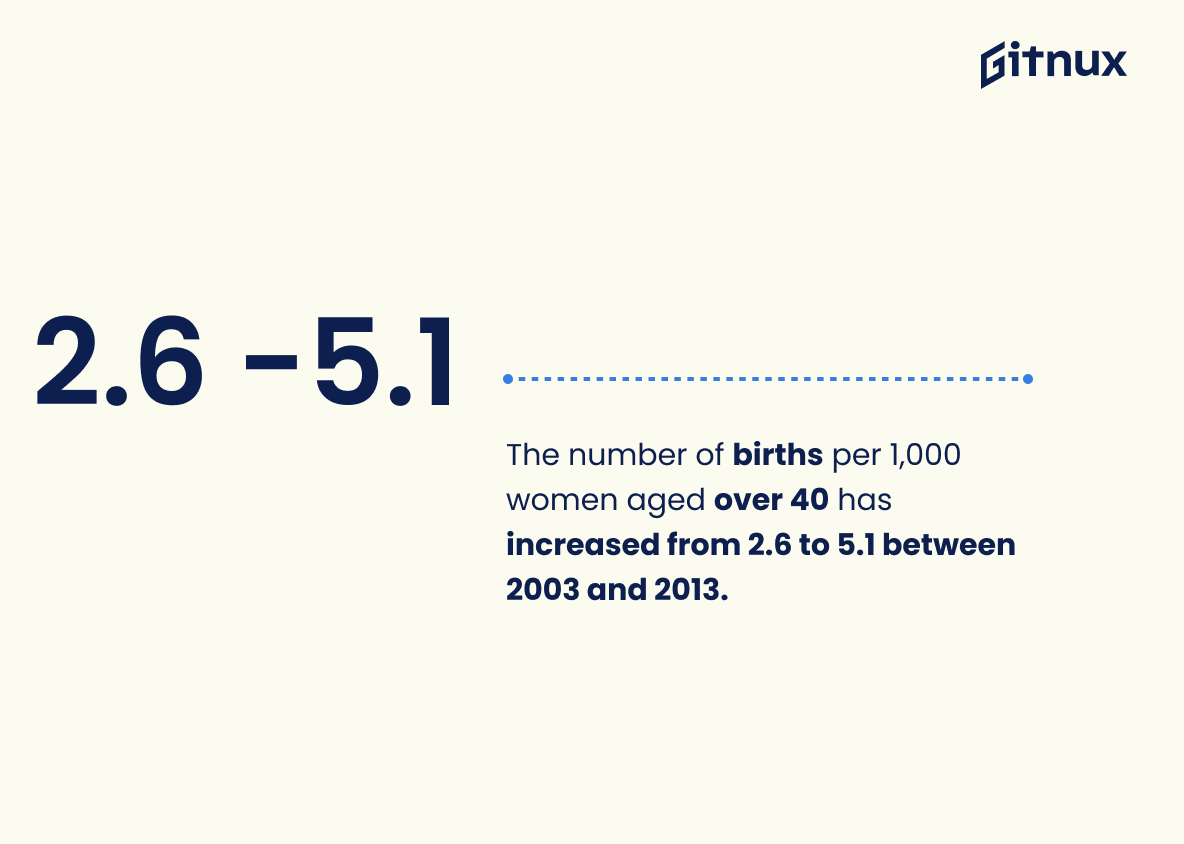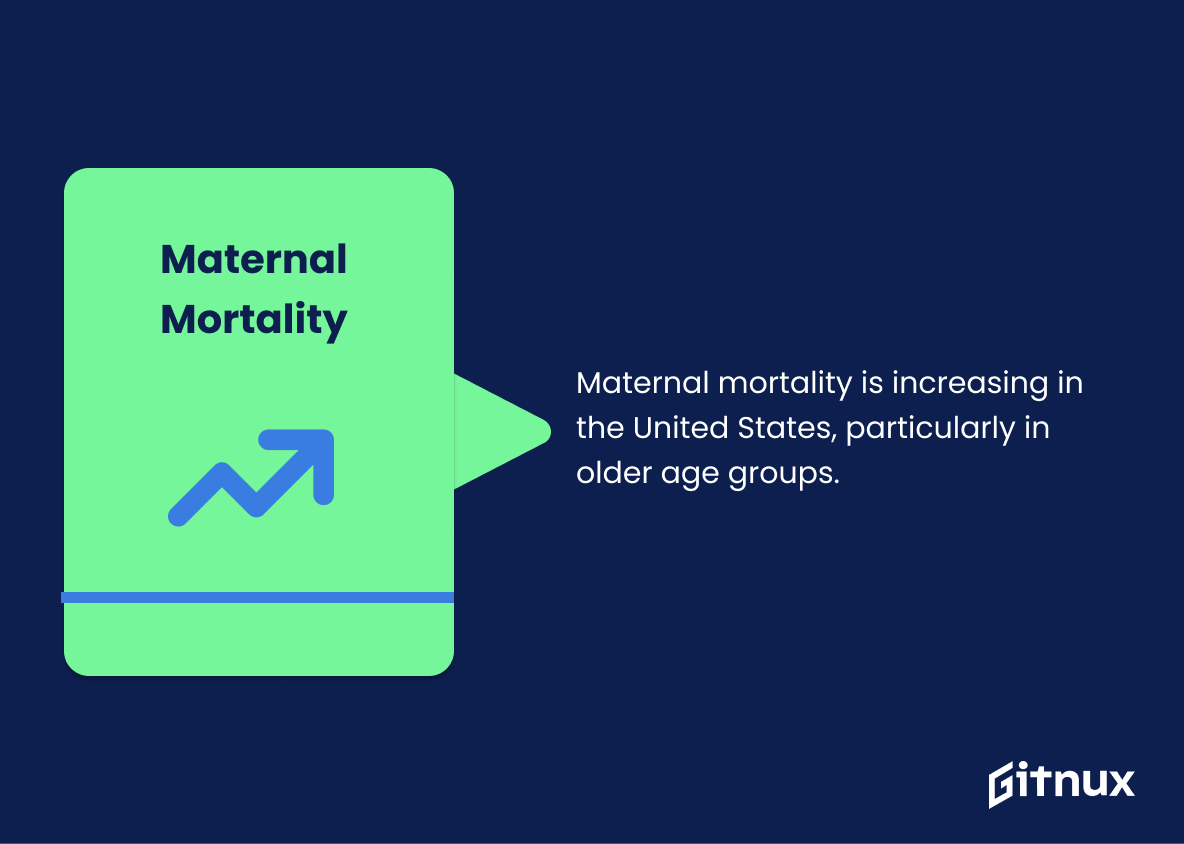As women age, they often face the difficult decision of whether or not to have children. For those who decide to have children later in life, there are a variety of risks and benefits associated with pregnancy after 40.
In this article, we will explore the statistics related to pregnancy after 40 and discuss the potential risks and benefits associated with this decision. We will also provide resources for those considering this option and provide advice for those who are already pregnant.
Pregnancy After 40: Most Important Statistics
The number of births per 1,000 women aged over 40 has increased from 2.6 to 5.1 between 2003 and 2013.
Maternal mortality increases with age, rising from 10.12 to 25.45 between ages 30-34 and 40 respectively.
Pregnancy After 40: Statistics Overview
Maternal age is associated with an increased fetal mortality rate, with women over 40 having the highest number of fetal deaths per 1,000 births.
This highlights the increased risk of pregnancy loss associated with older maternal age, and the further risk increase associated with tobacco use.
This information can be used to inform women and their healthcare providers of the risks associated with pregnancy after 40, and to help them make informed decisions.
The study showed that fetal mortality rate increases with maternal age, regardless of race.
Women over 40 are at a higher risk of having a stillbirth or a baby with a birth defect.
Older mothers have a twelvefold higher probability of having a baby with Down Syndrome compared to younger mothers.
This highlights the importance of being aware of the increased risk of chromosomal disorders associated with older mothers.
This information can help women make informed decisions about their reproductive health and plan for any potential risks associated with having a baby at an older age.
The risk of having a child with Down Syndrome increases exponentially after 30 years of age.
The risk of having a child with Down Syndrome is much higher for women who are over 30 years of age.
This information is important for women who are considering getting pregnant after 40, as they should be aware of the increased risk of having a child with Down Syndrome.
Cesarean delivery rate is highest among mothers over 40 years in the United States between 1996 and 2020.
The risk of needing a cesarean delivery increases with age, which is an important factor to consider when discussing the risks associated with pregnancy after 40.
Maternal age is a major factor in cesarean delivery rate, with mothers over 35 having the highest percentage of cesarean deliveries at both 38 and 39 weeks of gestation.
The risk of cesarean delivery increases with maternal age, which is a major factor to consider for women over 40 who are pregnant.
This information can help them make informed decisions about their pregnancy and delivery.
The number of pregnancies among women above 40 appears to have increased gradually since 1990, with an accentuated increase after 2001.
More and more women are having children later in life, which can have implications for their health and the health of their children.
It also highlights the need for more research into the effects of pregnancy after 40, as well as the need for more resources and support for women who choose to become mothers later in life.
The number of births per 1,000 women aged over 40 has increased from 2.6 to 5.1 between 2003 and 2013.
More women are choosing to conceive at an older age, despite the risks associated with later pregnancies. This could be due to a variety of factors, such as career, economic stability, and infertility cases.
Maternal mortality is increasing in the United States, particularly in older age groups.
This statistic is important in the context of Pregnancy After 40 Statistics because it highlights the increased risk of death during pregnancy for women over 40.
This increased risk is important to consider when making decisions about when to become pregnant.
Maternal mortality increases with age, rising from 10.12 to 25.45 between ages 30-34 and 40 respectively.
This matters in the context of Pregnancy After 40 Statistics because it highlights the increased risk of maternal mortality for women over the age of 40 who are pregnant.
Conclusion
In conclusion, the statistics surrounding pregnancy after 40 are quite varied. While there are some risks associated with pregnancy at this age, many women are able to have successful pregnancies and healthy babies.
It is important to discuss any concerns with your doctor and to take the necessary steps to ensure a healthy pregnancy. With the right care and support, women over 40 can have a successful and rewarding pregnancy.
References
1 – https://www.statista.com/statistics/1285779/fetal-mortality-rates-united-states-by-age-tobacco-use/
2 – https://www.cdc.gov/nchs/data/nvsr/nvsr70/nvsr70-11.pdf
3 – https://www.cdc.gov/ncbddd/birthdefects/downsyndrome/data.html
4 – https://www.aafp.org/pubs/afp/issues/2000/0815/p825.html
5 – https://www.statista.com/statistics/206438/us-cesarean-delivery-rates-by-age-of-mother/
6 – https://www.cdc.gov/nchs/products/databriefs/db124.htm
7 – https://www.statista.com/statistics/297718/conception-rate-per-thousand-women-in-england-and-wales-by-age/
8 – https://justhealthcaretips.com/having-a-baby-at-40/#How_common_is_Pregnancy_over_40
9 – https://www.statista.com/statistics/1240127/us-maternal-mortality-rates-by-age/
10 – https://www.koreamed.org/SearchBasic.php?RID=2316288
